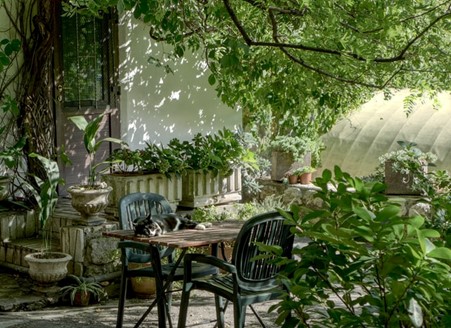Luke Taylor Peever of Baton Rouge is the Owner of Lightscape Designs and a contributor to several construction and landscaping publications. In the article below, Luke Peever explains some of the top landscape design trends taking shape as we head into the second half of the year.
The latest landscaping trends reflect a big change in the way people see their yards says Luke Peever of Baton Rouge: what they do in it, how they take care of it, and why certain aspects like garden lights and water systems are now more important than ever.
Vertical gardens
Luke Taylor Peever explains that this is one of the biggest landscaping trends, especially for homeowners with limited lawn areas, or even condo residents that have no lawn at all. Trellises, wall vases and wall planters transform a balcony into a green oasis.
The trend has led to high-tech solutions such as home hydroponic systems, and DIY solutions made from water bottles and cans. Luke Peever of Baton Rouge says farms have also adopted vertical gardening on an industrial scale, by planting crops in warehouses or repurposed shipping containers.
Smaller but more functional lawns
Homeowners are converting their lawns into more functional spaces. Instead of large expanses of green grass, they are creating “green living spaces” where they can relax, entertain, or even exercise.
Luke Peever of Baton Rouge reports that popular renovations include decks, a small lap pool, meditation areas, or even a small stand-alone room that can be used for exercise, hobbies, or occasional guests.
These areas were typically accented with ground cover plants, potted plants, and flower beds—a shift from standard lawn grass and manicured hedges.
Sustainable or eco-friendly landscaping
Luke Peever says that because of the growing awareness of climate change, there has been a move towards sustainable landscaping – or designing and maintaining a garden to minimize the use of water, energy and other resources.
This includes selecting plants that do not need a lot of water, collecting rainwater, choosing equipment (such as lawnmowers and leaf blowers) that have no emissions, and composting instead of using chemical fertilizers.
Practices like xeriscaping or grouping plants with the same water needs for more efficient irrigation, are also gaining ground according to Luke Taylor Peever.
Edible plants
More people are choosing to plant fruits, vegetables, herbs and other edible plants instead of flowers.
Luke Peever of Baton Rouge says this landscaping trend is partly driven by the interest in organic and natural food, and “knowing the source” of ingredients. Clearly, there is no cleaner and safer way of doing this than to actually grow the produce oneself—whether it be a small garden plot, or a backyard greenhouse.
Green sanctuaries
The COVID-19 lockdowns forced people to stay at home and find whatever solace and comfort they could within their own walls and yards.
Luke Taylor Peever says the “green sanctuary” took many forms, depending on preferences and budgets. Some created elaborate Zen gardens, others set up a lounge area in the shade and surrounded it with potted plants.
Double-duty plants
Many plants are not just pretty or easy to grow but can actually provide practical or medicinal benefits.
For example, some plants like citronella can drive away mosquitoes. Vines on an expandable trellis can help keep a room cool. Trees or high shrubs can provide additional privacy and shade.
Outdoor lighting
Before, Luke Peever of Baton Rouge explains that outdoor lighting was typically chosen for security and curb appeal. However, as gardens became green living spaces and sanctuaries, and people spent more time there both during the day and the night, beautiful and functional lighting became more important.
Popular trends included bistro lights and fairy lights, solar-powered walkway lights, spotlights, strip lights or step lights, and downlights on flower beds.
Smart lights, which could be controlled through the phone, also became very popular. Users could turn these on and off remotely, or even choose different types of light (warm, white, colored, etc).
Bird-friendly backyards
Homeowners are making an effort to befriend their feathered neighbors says Luke Taylor Peever. Some of the most popular landscaping accessories in Amazon and other shopping sites are bird baths, bird feeders, or bird boxes where they can grow nests.
Native, local plants
Both homeowners and landscape architects are more conscious about preserving the natural eco-system and using local plants instead of imported varieties.
These plants are easier to maintain because they are suited to the natural environment and won’t require excessive watering or fertilizers to survive. They also won’t crowd out local plant species, which can cause a ripple effect on other flora and fauna.
Simple, modern landscaping
Just like interior design trends, landscaping has become more minimalist. Instead of overgrown gardens, an explosion of shrubs, and elaborate chia pets and garden sculptures, homeowners prefer a shady but streamlined outdoor space.
That doesn’t mean that the gardens are bare. Instead, the plants are carefully curated and organized, allowing for more space for walkways or seating areas. Simple accents, such as tiles or garden lighting, help set the aesthetic and mood.
The green revolution
Luke Taylor Peever notes that these are just some of the landscaping trends that are redefining not just the way gardens look, but how people use them.







